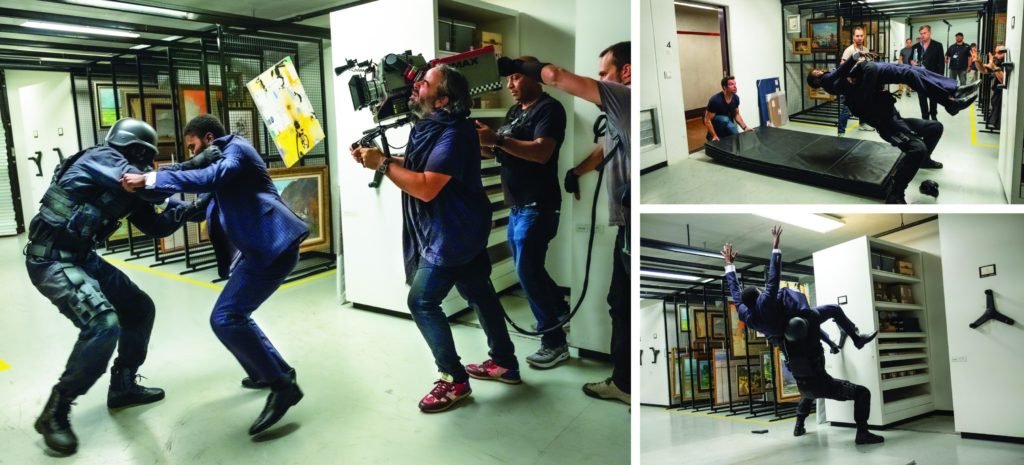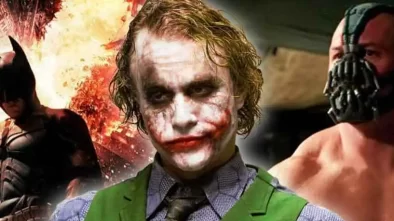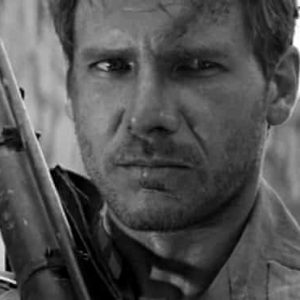‘Tenet’ Behind The Scenes: Crashing a Real 747 Into A Building And Other Practical Effects
Tenet is here, and Hollywood hopes this will be the blockbuster that reignites the box office despite Covid-19. Apparently there are places without it, and people in those places are watching Tenet.
For those of us who can’t see the film, director Christopher Nolan has released a BTS video of the film. The footage shows the sheer ambition of Nolan and his DOP Hoyt Van Hoytema. They crashed a fricken Boeing 747 into a building. No models. No CGI. The actual full-size real thing.
Check out the behind the scenes featurette, and let’s break it down.
It’s A Reality-Bending Spy Film
Christopher Nolan loves the James Bond films. He’s referenced them in his movies, and devised whole sequences based on them. So where do you go next if you can’t get the keys to the Bond franchise? You make your own spy film.
“Tenet is an espionage story, it’s a classic spy story,” says Nolan. “I grew up loving spy movies. But to make it seem to today’s audiences, I sort of felt like for me to really engage with it, I wanted it to have bigger possibilities. […] The film deals with this concept of inversion, which is the idea that the entropy of an object or person could be reversed. It’s very much cinematic, it’s something that you’ve to see on the screen to fully engage with.”
Nolan is adamant you need to leave your house and risk getting Covid to see this film. It’s best on the big screen. I mean who wants to see a real 747 crash into a building on a 70 inch screen? It probably needs IMAX right? Clearly, this won’t be a typical spy film. It’s next level, time-bending stuff that Nolan deals with in every film. I’m not sure how “inversion” will play out in the plot, and with Nolan’s films you don’t want to know. You want the whole mesmerizing experience to unfold in front of you on the screen.
Everything Shot In-camera
The Boeing 747 is not the only thing shot in-camera. Nolan doesn’t like CG. There’s no greenscreen. The actors are, for the most part, shot in real environments. As production designer Nathan Crowley says, “Our method of special effects is to try to do everything without them.”
The experience is good for the actors. The real thing is always there to play off. And according to Nolan it’s a better experience for the audience who are always aware on some level of the difference between something photographed for real and something animated.
When dealing with a concept like inversion the crew needed to work out how to make objects move in reverse. The concept of everything moving in reverse clearly wasn’t just shot and then played backwards. Even the stunt guys and the actors had to learn to move in reverse for the fight scenes. “It was intense,” says Washington. “That was what was so exciting. These moves we’ve never seen before. I remember these stunt guys who’ve been around a long time. They were learning, which was the fun challenge of it all.”
Shooting these stunts in-camera was only possible because of Washington’s athletic ability and desire to do his own stunts.

Source: Warner Bros.
They Shut Down A Whole Freeway
The film is packed with elaborate action set pieces that would prove a logistical nightmare for even the most seasoned filmmaker. Nolan, though, seems to enjoy creating increasingly elaborate action scenes with each successive film. While you can’t top slamming a real Boeing 747 into a building, shutting down an 8 kilometre freeway for three weeks is no small feat.
However, in the video you can see Nolan is taking it in his stride. He’s assembled a talented crew at this point, who can help carry the load during production. These people know what they’re doing. This is the eighth Nolan film for production designer Nathan Crowley, and the fifth for DP Hoyt Van Hoytema. Both are just as instrumental in creating the look of the film, as Nolan himself.
Hoytema is primarily responsible for filming all this in-camera. He explains how they used IMAX cameras to shoot numerous scenes. Hoytema operated those monstrous cameras handheld, which could easily be disastrous when sitting on the back of a speedboat.
IMAX weren’t the only cameras used. Here’s a complete list of what the crew shot on:
- Arriflex 765
- IMAX MKIII
- IMAX MKIV
- IMAX MSM 9802
- Panavision 65
- Panavision Panaflex System 65 Studio
Tenet is written and directed by Christopher Nolan. Early screenings hit the U.S. on 31st August 2020, with a general release nationwide on 3rd September.




